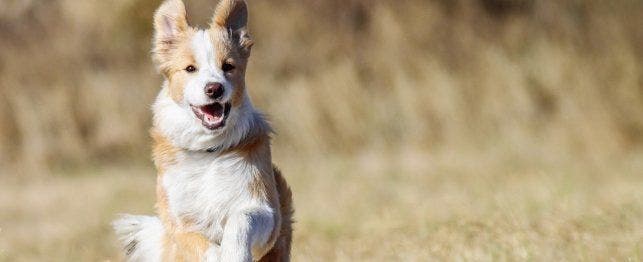
How to Deal with an Overactive, Uncontrollable Dog
Dealing with Overactive Uncontrollable Dogs
Some dogs seem to live a manic life and are like furry wind-up toys with springs: While other dogs walk, they run. While others nap, they pace. On the leash, they tug and yank their owners down the street. Off the leash, they seek confrontation and then may run off. They bark excessively, jump up on nicely attired strangers, mouth and tug the leash, steal food off the counter, and demand a tremendous amount of attention.
Why Are Dogs Overactive?
Overactive dogs are typically normal dogs with learned behavior problems rather than medical anomalies. It is relatively rare for a dog to suffer from hyperkinesis, the canine equivalent of attention-deficit hyperactivity disorder. Dogs with hyperkinesis are strikingly frenetic in their behavior. Their heart rates and breathing rates are extremely high and they rarely rest – even at home – careening around non-stop until they collapse in exhaustion.
Some breeds are genetically predisposed to be physically active – sporting breeds, for example. But that doesn’t mean they are uncontrollable. Far from it. Most overactive dogs have learned to be that way because their jumping, barking, running and tugging have earned them fun or attention – sometimes lots of it.
For example, supposing your dog begins to bark or steal objects whenever you’re occupied by a telephone call. Let’s say you try to ignore the behavior, giving a few half-hearted reprimands, then hanging up and scolding your dog. You might not realize it, but your dog would have achieved a fairly impressive result. He would have monopolized your attention while you were on the phone and succeeded in getting you all to himself. Even a little scolding is better than the alternative of being ignored.
In general, problems of this nature can be addressed with a combination of verbal control, physical restraint, and increased exercise. All dogs benefit from learning, and then rehearsing basic obedience – especially responding to “sit,” “down,” “sit-stay” and “down-stay.” These maneuvers are more than meaningless drills because they allow you to “speak” to your dog and educate him on how you would like him to respond.
Effective training should include effective rewards – basically, fun and/or food. Dogs learn best when the consequences of their actions are highly rewarding. To gain more control over your dog’s behavior, consistently instruct him to “sit,” or say “down,” to earn what he wants, including food, petting, play, or any other kind of attention.
How To Control an Out-of-Control Dog
- Use a head collar. Out-of-control dogs almost all universally respond to a head collar, or head halter, a humane and simple tool for training that’s available at quality pet stores and through veterinarians. Slip the collar on, attach a leash and get on with your training.
- A leash is valuable – even indoors. Dogs that jump, leap and run out of reach should be kept on leash before a problem actually occurs. For example, when that telephone rings, immediately attach a leash to your barking friend. He will quickly learn to behave appropriately if his good behavior (such as lying down to chew a “my-owner-is-on-the-telephone” toy) is rewarded while his “bad” behavior is ignored or corrected each and every time.
- Increase your dog’s exercise. All dogs enjoy and appreciate regular exercise. Some dogs, however, require particularly vigorous exercise, such as running, swimming or regular and extended games of fetch. Whatever your dog’s exercise regime, consider increasing both its duration and quality.
- Review any medications your dog is taking. Though uncommon, certain medications can lead to hyperactivity and anxiety. Two notable examples are thyroid hormone supplements (ask your veterinarian to check your dog’s blood level once a stable dose is attained) and bronchodilator medicines used for bronchitis or “asthma-like” symptoms.
- Consider professional help. If the problem seems too difficult to change without help, ask your veterinarian for assistance or for a referral to a behavioral specialist. Although most overactive dogs are normal and will respond to behavior modification, a minority may be suffering from true, physiological hyperactivity, which may require medication in addition to a training program.